2014 Events Archive
| DATE | EVENT | Speaker(s) |
|---|---|---|
April 24 | The Image of the New World: Myth or Reality? | Professor Daria Perocco |
| May 30 | The Voyage: a Journey into the Fantastic World of Fiction and Film | Mario Vargas Llosa, Alessandro Baricco, Vittorio Storaro |
| August 4 | Old and New Truths from Ethiopia | Stefano Giovannelli |
| October 16 | Philosophiae Naturalis Principia and Galileo: The Development of Natural Philosophy | Dr. Carlo Rubbia |
| November 17 | A Symposium on Brain Studies Research | Dr. Pietro Calissano, Dr. Rebecca Landa, Dr. John Vanmeter |
| December 2 | Galileo: The Exploration of the Universe | Dr. Adam Riess, Dr. Massimo Stiavelli |
Tuesday, December 2, 2014, at 5:30 p.m.
Intercultural Center Auditorium, Georgetown University
To celebrate Galileo’s 450th anniversary of his birth, the Italian Research Institute, in collaboration with the Italian Embassy, is sponsoring a series of conferences on the scientific investigation of the universe.
Speakers
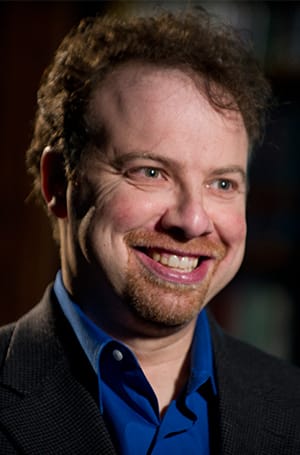
Dr. Adam Riess
2011 Nobel Laureate in Physics and Astronomy
Dr. Adam Riess is the Thomas J. Barber Professor in Space Studies at the Krieger School of Arts and Sciences, a distinguished astronomer at the Space Telescope Science Institute, and a member of the National Academy of Sciences. He received his bachelor’s degree in physics from the Massachusetts Institute of Technology in 1992 and his Ph.D. from Harvard University in 1996. His research involves measurements of the cosmological framework with supernovae (exploding stars). In 2011, he was named a co-winner of the Nobel Prize in Physics and was awarded the Albert Einstein Medal for his leadership in the High-z Supernova Search Team’s discovery that the expansion rate of the universe is accelerating, a phenomenon widely attributed to a mysterious, unexplained “dark energy” filling the universe. The discovery was named by Science magazine in 1998 as “the Breakthrough Discovery of the Year.”
Abstract
Using Telescopes to See Dark Energy
In 1609 Galileo used the first telescope to look into the heavens. In 1929 Edwin Hubble used the biggest telescope of his time and discovered that our Universe is expanding. Eighty years later, the Space Telescope that bears his name is being used to study an even more surprising phenomenon: that the expansion is speeding up. The origin of this effect is not known, but is broadly attributed to a type of “dark energy” first posited to exist by Albert Einstein and now dominating the mass-energy budget of the Universe. Professor Riess will describe how his team discovered the acceleration of the Universe and why understanding the nature of dark energy presents one of the greatest remaining challenges in astrophysics and cosmology.
Dr. Massimo Stiavelli
The James Webb Space Telescope Mission Head
Dr. Massimo Stiavelli obtained his Ph.D. in Physics at the Scuola Normale Superiore of Pisa (Italy) in 1986. He has held positions at the Scuola Normale Superiore of Pisa (1992-1995) and at the Space Telescope Science Institute in Baltimore (since 1995) where he is currently an astronomer and the James Webb Space Telescope Mission Head. As the JWST Mission Head Dr. Stiavelli leads the development of the science and flight operations of the James Webb Space Telescope, a 6.5m infrared-optimized space telescope, scheduled for launch in 2018.
Abstract
Then and Now: The Evolution of Astronomy Since the Time of Galileo
Dr. Stiavelli will use a few examples of astronomical sources to contrast the basic understanding of astronomy at the time of Galileo and now. He will then move on to describe the near future in the form of the James Webb Space Telescope (JWST), the successor of the Hubble Space Telescope currently in development. He will focus on JWST’s expected contributions to the study of the earliest stars and galaxies in the Universe and to the characterization of planets outside the solar system that might be suitable for harboring life.
A Symposium on Brain Studies Research
Monday, November 17, 2014, at 5:30 p.m.
New Research Building Auditorium, Georgetown University Medical Center
To coincide with the Society for Neuroscience that will meet in DC for their annual meeting the Italian Research Institute, in collaboration with the Italian Embassy, is sponsoring a conference on the latest research on brain studies in two areas: Alzheimer’s and Autism.
Speakers
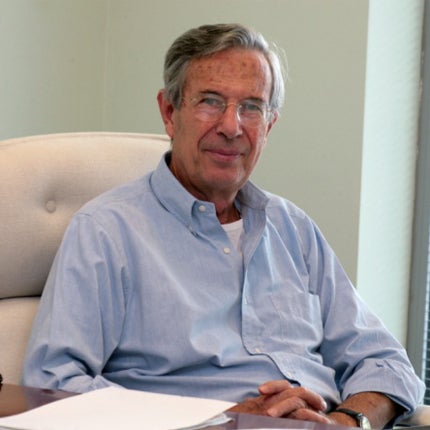
Dr. Pietro Calissano
President, European Brain Research Institute (EBRI)
Rita Levi Montalcini, University of Rome
Pietro Calissano, born in Genova, obtained a degree in Medicine magna cum laude in 1964 at the University of Genova. In 1965 he was invited by Rita Levi Montalcini to join the Center of Neurobiology she had created in Rome. The following year he moved to Washington University of Saint Louis where he spent 2 years working under the guidance of Levi Montalcini on the mechanism of action of NGF. In subsequent years Dr. Calissano spent several long-term stages in Cambridge, England, at the Weizman Institute, Israel, and at Harvard Medical School, working on NGF, the brain-specific protein S-100 and on some other neurobiological studies connected with neurotrophins and their molecular mechanism of action.
In 1986 Dr. Calissano became a full professor of Neurophysiology at the II University of Rome and in 1988 was nominated director of the Institute of Neurobiology of CNR which he directed until 2008. Dr. Calissano is a member of the European Molecular Biology Organization (EMBO), the Italian Academy of Sciences, and the Scientific Committee of the Istituto Italiano della Treccani. Dr. Calissano is the recipient of scientific prizes such as the Feltrinelli Award by the Accademia dei Lincei, the Neuburgh Prize, and the annual prize conferred by the Italian Academy of Sciences.
Abstract
Alzheimer & Autism: A Scientific, Social and Human Challenge
Neurobiologists are challenged with a main, crucial goal: finding not only the causes but the therapeutic treatment(s) of neurodegenerative diseases such as Alzheimer’s (AD) and Parkinson’s (PD), whose onset is tightly connected with aging. The most widely accepted hypothesis is that the trigger of AD is the activation of the amyloidogenic pathway and subsequent, crucial involvement of the tau protein. The amyloidogenic pathway is characterized by anomalous processing of the amyloid precursor protein (APP) with consequent production of toxic peptides 1-40 and 1-42. Dr. Calissano’s research group has focused their studies on trying to assess whether nerve growth factor (NGF) – the protein molecule discovered by Rita Levi Montalcini with whom he had the privilege of collaborating for a long time, could be employed to treat Alzheimer’s disease (AD). He will present studies carried out in the last decade in his Institute showing that lack of supply of NGF to cholinergic neuronal populations involved in cognitive functions or to NGF-differentiated clonal cell lines, may trigger the amyloidogenic pathway somewhat mimicking an “Alzheimer-like molecular syndrome”. These findings prospect the use and administration of NGF as a potential therapeutical agent in all cases of AD due to the lack of supply of NGF.
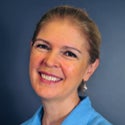
Dr. Rebecca Landa
Director, Center for Autism & Related Disorders and the REACH Research Program at the
Kennedy Krieger Institute
Rebecca Landa, Ph.D., CCC-SLP, is the founder and director of the Center for Autism and Related Disorders (CARD) and the REACH research program at Kennedy Krieger Institute. She is also a professor of psychiatry at the Johns Hopkins University School of Medicine.
Dr. Landa obtained her master’s degree at the Pennsylvania State University and her doctorate at the University of Washington. She completed post-doctoral training in psychiatric genetics at Johns Hopkins. She is the recipient of the NIMH Shannon Award for excellent and innovative research, as well as the Rita Rudel Prize for Developmental Neuropsychology. She is also the recipient of the 2009 Alumni Recognition Award from the College of Human Health and Development of the Pennsylvania State University. Dr. Landa is a speech-language pathologist. She has practiced in public schools, university clinics, and hospital settings.
Dr. Landa has consulted with schools and families on an international level to establish state-of-the-science educational programming for children with autism spectrum disorders. Dr. Landa’s research has focused on neuropsychological, learning, and communication processes in autism across the lifespan. She was the principal investigator of an NIH STARRT Center of Excellence, through which she developed and defined the evidence base for the Early Achievements intervention for toddlers with autism spectrum disorders. She has pioneered research aimed at identifying the earliest signs of autism through the study of infant siblings of children with autism. She is a member of the executive committee for Autism Speaks’ Baby Sibs Research Consortium and is a member of the Toddler Treatment Network. Dr. Landa is also the principal investigator for an Autism Treatment Network site and is a co-principal investigator for two studies funded by the Centers for Disease Control (SEED and ADDM) and NIMH (EARLI). She has multiple research collaborative studies that involve leading scientists. She has multiple research collaborative studies that involve leading scientists within the United States and abroad. Dr. Landa is the author of the Pragmatic Rating Scale, used internationally in autism-related research and clinical practice. Her current research focus is on learning processes in autism, as well as early detection of and intervention for autism spectrum disorders (ASD)
Abstract
Advances in the Early Detection of Autism and Development of Interventions
Autism spectrum disorders (ASD) affect 1 in 68 children. The importance of early detection of ASD is well recognized but the first diagnosis is usually at or after age 4 years. Dr. Landa’s prospective, longitudinal research with infant siblings of children with ASD has elucidated ASD developmental pathways in the first three years of life. Her findings and new tools promise to lead to earlier detection of ASD. In this presentation, Dr. Landa will describe findings from her research pertaining to early ASD risk indicators and developmental trajectories. Evidence-based interventions will be described, along with translational science projects underway to make these interventions more accessible to children with ASD.

Dr. John VanMeter
Director, Center for Functional & Molecular Imaging
Georgetown University School of Medicine
Dr. VanMeter has significant expertise in the analysis of magnetic resonance imaging (MRI) data. His graduate work involved the development of computer algorithms used for the analysis of white matter and gray matter segmentation in structural MRI scans. Before joining the faculty at Georgetown, he was a staff fellow in the Laboratory of Neuroscience at the National Institute of Aging, where he co-authored the first paper to use fMRI to investigate dyslexia. Dr. VanMeter has led the development of a number of major software programs as the Director of Research and Development at Sensor Systems, Inc. This includes a commercial software package that is utilized at over 300 research institutions worldwide in the analysis of multi-modal datasets including structural MRI and fMRI as well as the subsequent development of one of the first FDA-cleared fMRI clinical analysis packages.
Recently, he has developed a coordinated data analysis platform for all data collected and analyzed in the Center for Functional and Molecular Imaging (CFMI). In addition, he is developing a database integrating neuroimaging data (e.g. MRI and near-infrared optical) and neuropsychological and behavioral measures improving data management and allowing for mining of the CFMI.
As PI of an NIH-funded STAART (Studies to Advance Autism Research and Treatment) center grant project, Dr. VanMeter is applying a number of MRI-based techniques including fMRI, Diffusion Tensor Imaging (DTI), and MR spectroscopy to investigate the neurobiological basis of autism. His research interests also include posttraumatic stress disorder and deception detection.
Abstract
The Role of Neuroimaging in Understanding Autism
For the past couple of decades, various non-invasive imaging techniques such as CT and MRI have held out the promise of providing us with an objective tool for diagnosing and/or determining the cause of autism. While these techniques have indeed provided new insight into this neurodevelopmental disorder, to date these goals have decidedly not been met. In this talk, he will cover what they have learned and what the future might hold.
Philosophiae Naturalis Principia and Galileo: The Development of Natural Philosophy
Thursday, October 16, 2014, at 5:00 p.m.
Intercultural Center Auditorium, Georgetown University
Introduction by
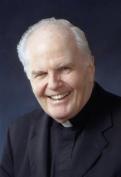
Rev. Charles Currie, S.J.
Executive Director of the Jesuit Commons
Georgetown University
Father Currie served as President of Wheeling College and Xavier University.
Speaker
Dr. Carlo Rubbia
1984 Nobel Laureate in Physics
Dr. Carlo Rubbia is an Italian particle physicist and inventor. He was born in Gorizia, Italy. He received a degree in Physics from the Scuola Normale of Pisa and in 1959 received his Ph.D. in Physics from Columbia University in New York. Since 1961 he has been working at CERN (European Organization for Nuclear Research). In 1976 he suggested adapting CERN’s Super Proton Synchrotron (SPS) to collide protons and antiprotons in the same ring and the world’s first antiproton factory was built. The collider started running in 1981 and, in early 1983, an international team of more than 100 physicists headed by Dr. Rubbia and known as the UAI Collaboration, detected the intermediate vector bosons. In 1984 he was awarded the Nobel Prize for Physics for this discovery. From 1972 to 1989 Dr. Rubbia held the Higgins Professorship of Physics at Harvard University. During the 1990s Dr. Rubbia proposed the concept of an energy amplifier (ADS), a novel and safe way of producing nuclear energy. Dr. Rubbia is the recipient of more than 30 honorary degrees and is the author of more than 500 scientific papers. On August 30, 2013, President Giorgio Napolitano appointed Dr. Rubbia as Senator for Life.
Old and New Truths from Ethiopia
Monday, August 4, 2014, at 6:30 p.m.
Intercultural Center 450, Georgetown University
The Institute, in collaboration with We The Italians, co-sponsored a conversation on foreign aid with Stefano Giovannelli, author of The New Flower and Director of Toscana Promozione.
The Voyage: a Journey into the Fantastic World of Fiction and Film
Friday, May 30, 2014, at 4:15 p.m.
Gaston Hall, Healy Building, Georgetown University

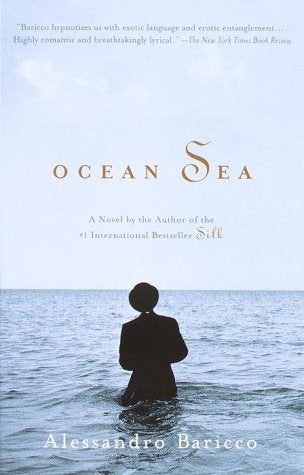
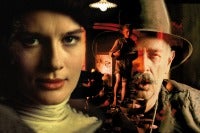
Proceedings from the May 30th conference on The Voyage:
Boccaccio on Stage.pdf by Mario Vargas Llosa
Writing. A Silent Journey.pdf by Alessandro Baricco
The Art of Cinematography.ppt by Vittorio Storaro
A conference in collaboration with the Italian Embassy.
Mario Vargas Llosa will speak on “Boccaccio on Stage: a Journey into the World of the Imagination,” Alessandro Baricco on “Writing. A Silent Journey,” and Vittorio Storaro will present “The Art of Cinematography: a Visual Journey.” The public will have the opportunity to discuss with the speakers a range of topics including the role of the imagination in our daily life and to what extent technology and virtual reality enhance or reduce the readers’ and viewers’ ability to imagine.
Speakers
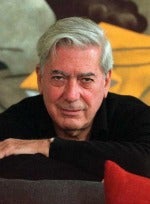
Mario Vargas Llosa
2010 Nobel Laureate in Literature
Mario Vargas Llosa, Nobel Laureate in Literature 2010, will be one of the keynote speakers who will discuss his new play inspired by Boccaccio‘s The Decameron. He is a Peruvian-Spanish writer, politician, journalist, essayist, and college professor. He is the author of some of the most significant writings to come out of South America in the last half-century. His novels include The Greenhouse, The Feast of the Goat, The War of the End of the World, and many others.

Alessandro Baricco
Alessandro Baricco is a well-known and popular novelist.
He was born in Torino, Italy in 1958. He has written essays and novels translated into various languages and published around the world. He has also directed a film, written plays, and founded the Scuola Holden – an International School of Storytelling and Performing Arts in Torino. His last book, published in the US, is The Barbarians, An Essay on the Mutation of Culture.
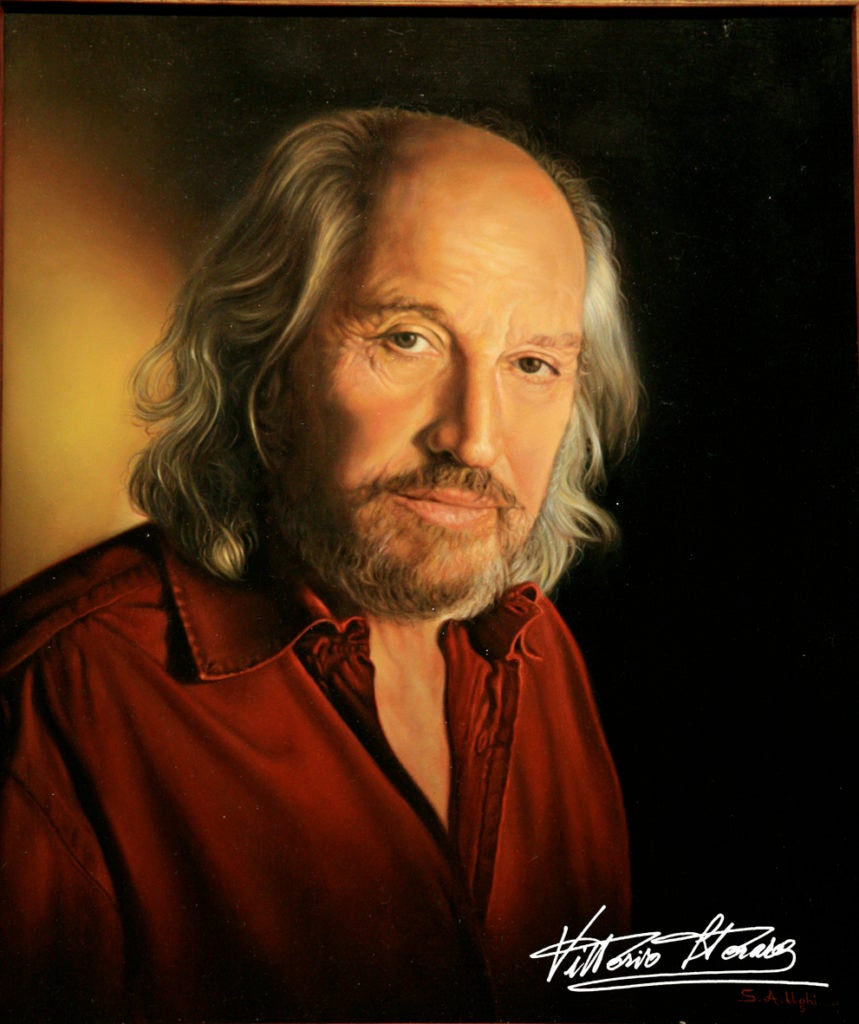
Vittorio Storaro
Vittorio Storaro is a famous cinematographer born in Rome. His work has been recognized by the Academy of Motion Picture Arts and Sciences in Los Angeles with three Oscars for the films: “APOCALYPSE NOW” directed by Francis Coppola, “REDS” directed by Warren Beatty, and “THE LAST EMPEROR” directed by Bernardo Bertolucci.
The Image of the New World: Myth or Reality?
Thursday, April 24, 2014, at 3:30 p.m.
Intercultural Center 462, Georgetown University
As part of the May event on the theme of “The Voyage” the Georgetown University Italian Research Institute, in collaboration with the Georgetown Italian Department, will host Professor Daria Perocco from the Università di Venezia who will give a talk on “The Image of the New World: Myth or Reality?”
